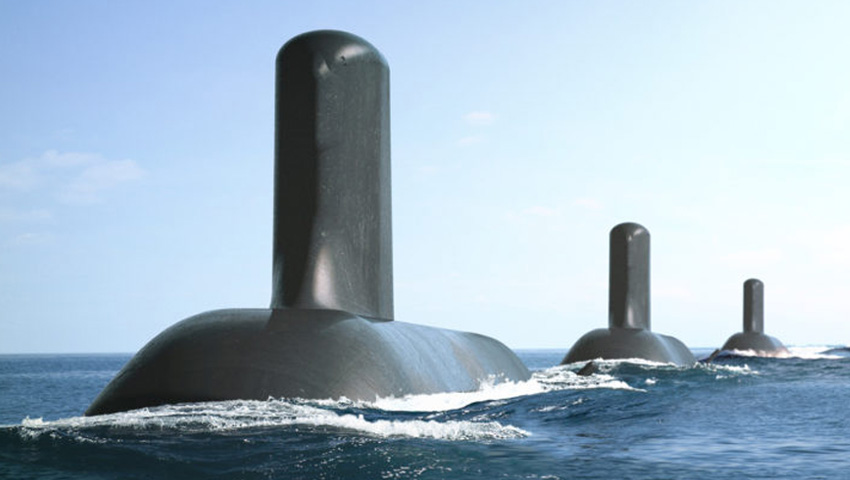Since the inception for the future submarine and shipbuilding projects, there has been much conjecture but little clarification of job figures involved in the construction and sustainment of Australia’s new naval vessels.
To continue reading the rest of this article, please log in.
Create free account to get unlimited news articles and more!
Writing for the Australian Strategic policy Institute, former economic adviser in Defence’s Capability Acquisition and Sustainment Group, Rob Bourke, has questioned the clarity of Senate estimate hearings and seeks to get to the bottom of the data.
Bourke has identified that during 2019's Senate estimates hearings for the Department of Defence a common pattern was emerging; extensive discussion regarding the number of Australian jobs created and associated with projects for building and sustaining naval vessels and an outcome that clarified little in terms of the numbers involved.
Lost in translation
He indicates that there was significant confusion regarding the meaning of key employment indicators, including:
- Direct jobs – Those which cover people employed by prime contracters and their subcontractors, working in dockyards or associated facilities; and
- Indirect jobs or 'flow on jobs' – Those jobs that support the provision of all other Australian inputs along the project supply chains.
While clearing up these meanings regarding key employment indicators, Bourke also introduces two new categories not mentioned during the hearings:
- Consumption-induced jobs – Jobs created in businesses that sell consumer goods and services to people working on projects. The skills associated with those jobs can differ markedly from the skills required for naval shipbuilding and sustainment; and
- Spillover jobs – A new technology or skill created by a project that other areas of the economy use to generate employment of their own. Because that employment is extraordinarily difficult to quantify, it’s not covered in Defence’s job figures. At the hearings, that point wasn’t made as clearly as it might have been.
The Defence data
Bourke states that direct jobs are often estimated by the prime contractors, however the insight needed into the extent of supply chains and beyond early phases of projects is often lacking by both contractors and Defence. Indirect jobs are estimated through economic modelling and refined throughout the process as project-specific data becomes available. Consumption-induced jobs are only estimated through economic modelling.
"Senators at the hearings were interested primarily in two sets of job numbers covering direct and indirect employment for shipbuilding and sustainment – one for 2025 and the other for all years of Defence’s naval shipbuilding plan expressed as an annual average (see Table 1). For both sets, the data provided by Defence falls short of what’s required for adequate coverage and categorisation," said Bourke.
Table 1: Shipbuilding and sustainment jobs by key category

Additional limitations to consider
Bourke identifies three additional limitations to consider.
Firstly, that the Defence figures include a high number of jobs carried over from previous projects. This hides the important issue of how aggregate employment numbers will change. However, these carry over jobs are extremely important for the sustainment of projects and products.
Secondly, the annual averages for shipbuilding are based on implicit and untested assumptions that companies constructing the Pacific patrol boats and the offshore patrol vessels will secure equivalent follow-on work in the medium to long term.
Thirdly, Defence stated in its October estimates hearing that its estimates of indirect jobs contain supply chain jobs only. Relevant economic modelling suggests those figures also incorporate a substantial consumption-induced employment effect, at least for larger build projects (see Table 2). Consumption-induced jobs add to employment across the economy – but not in naval shipbuilding and sustainment.
Table 2: Ratio of direct to indirect jobs in naval shipbuilding and sustainment

Bourke's estimates
"If those three limitations hold, I estimate additional or ‘new’ jobs will account for around one-third of the total number of jobs that naval shipbuilding and sustainment are expected to support in the period ahead. That support covers an estimated 15,000 jobs, measured on an annual average basis," Bourke said.
"The remaining two-thirds consists of numbers for jobs carried over from previous Defence projects, in serious doubt or created in non-defence areas of the economy. All those figures are maxima since they exclude the impact on national employment of the economic costs associated with paying for and resourcing projects."
"Finally, taken at face value, Defence’s estimates paint a picture of job creation that’s counterintuitive: the future frigate build generating many more jobs than the much larger future submarine build."
Table 3: Comparison of job creation for future frigates and future submarines

Bourke concludes by stating that it is difficult to assess or gain an indication of each project's Australian content without additional data. The assumed levels of domestic content underpinning Defence’s job estimates for most build projects weren’t presented at the hearings and haven’t been disclosed elsewhere.
As always, if you would like to join the conversation comment and let us know your thoughts below, or email at

 Login
Login







